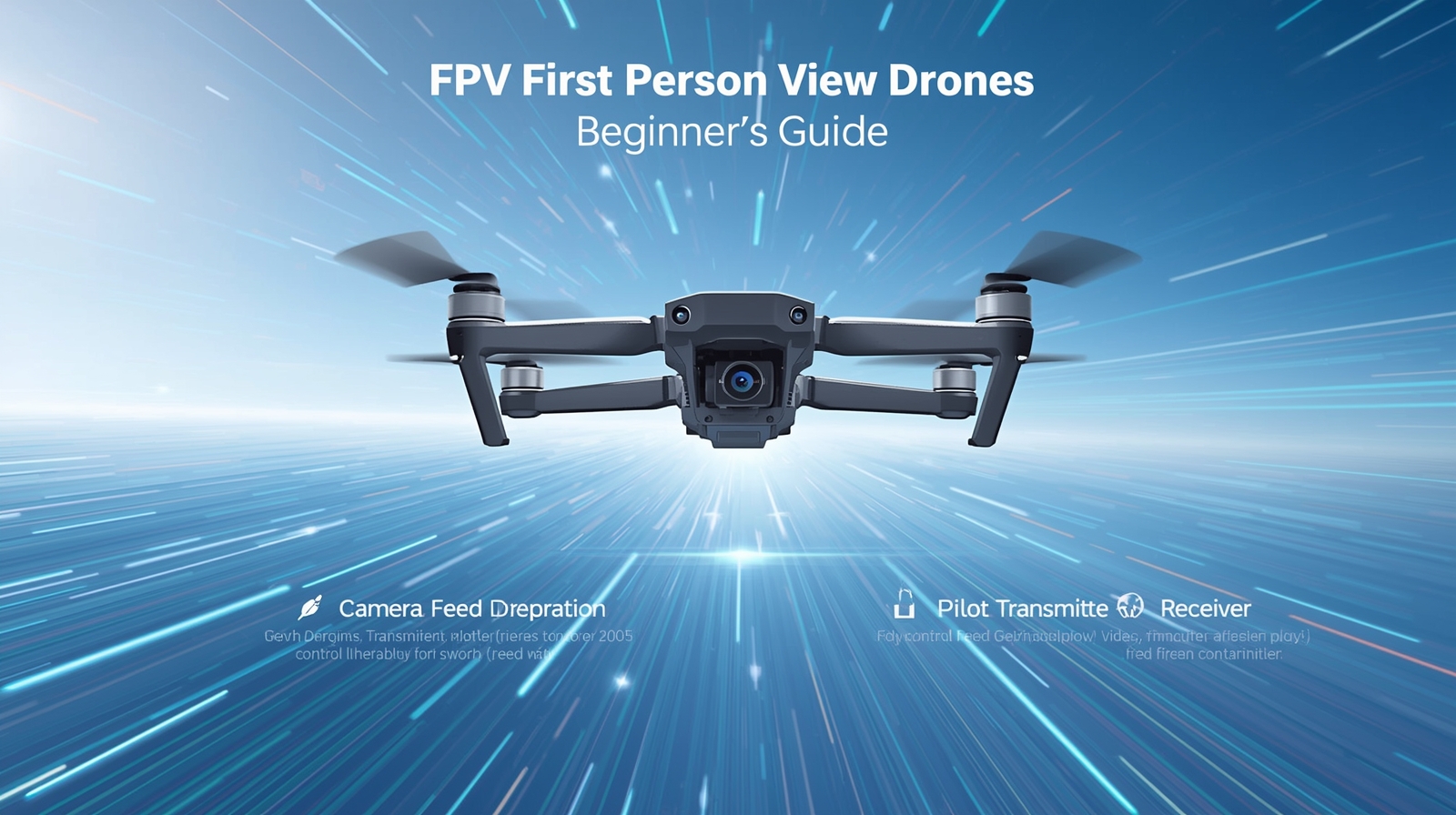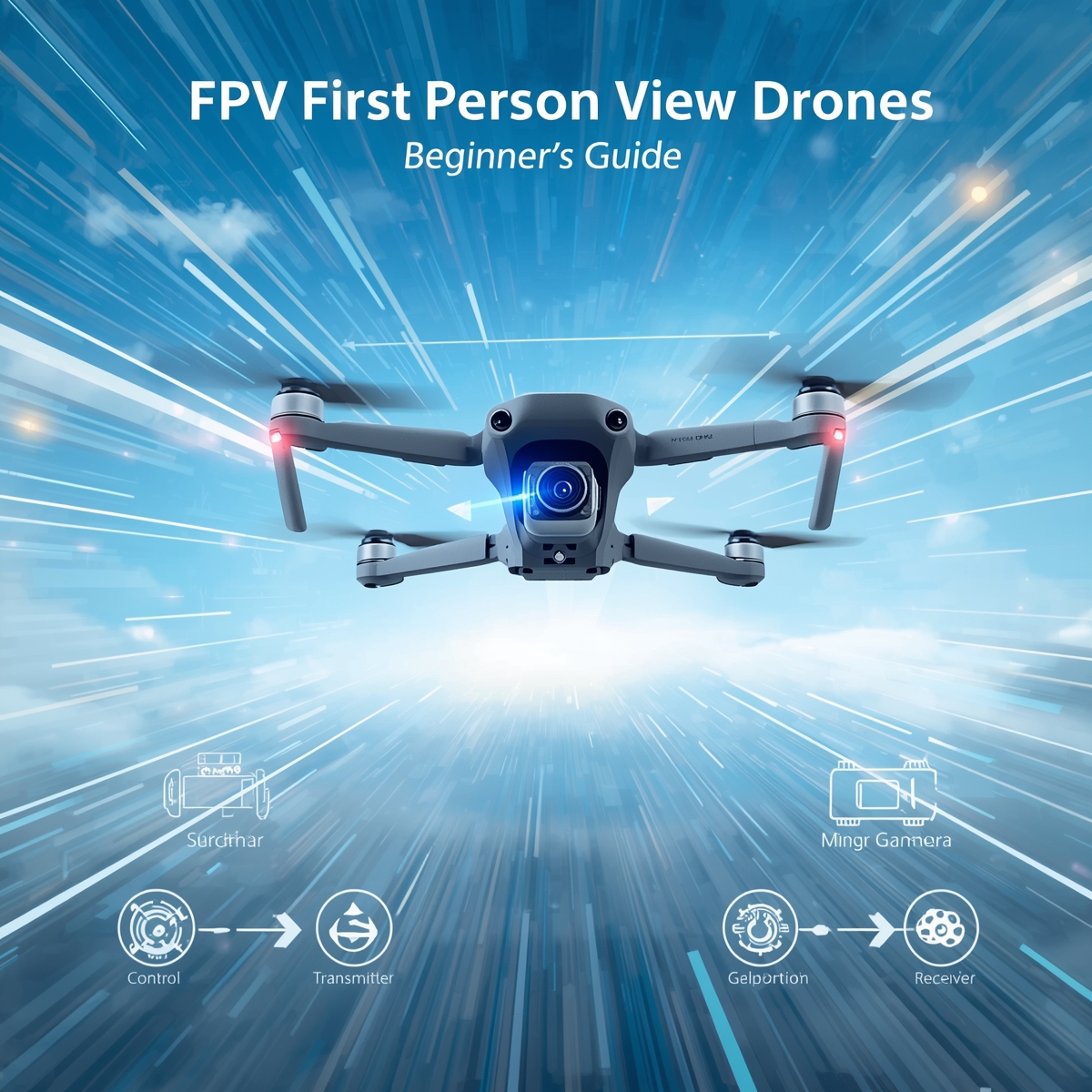Introduction
Ever dreamed of flying like a bird? With FPV drones, that’s exactly what you get.
FPV (First Person View) drones stream live video from the drone’s camera directly to your goggles or screen. Instead of watching the drone in the sky, you see what the drone sees — as if you’re sitting on it.
This guide will explain FPV drones in detail:
- What FPV flying is.
- How FPV drones work.
- FPV goggles, transmitters, and receivers.
- FPV for drone racing, freestyle, and cinematography.
What is FPV?
FPV (First Person View) is when a pilot controls a drone using a live video feed transmitted from the onboard camera.
- Normal drone flying = you watch it from the ground (line of sight).
- FPV = you view from the drone’s perspective (immersive “cockpit view”).
This gives unmatched speed, precision, and thrill → why FPV is popular for drone racing and cinematic drone shots.
How FPV Drones Work
Basic Components:
- Camera → Mounted on the drone, small/ lightweight.
- Video Transmitter (VTx) → Sends live video signal wirelessly.
- Video Receiver (VRx) → Installed in FPV goggles or screen.
- FPV Goggles / Screen → Where you see the live video.
- Radio Transmitter (controller) → Your input device (joystick).
- Flight Controller → Balances drone + processes commands.
Types of FPV Systems
- Analog FPV (Traditional)
- Uses 5.8 GHz radio waves.
- Pros: Very low latency (almost instant response).
- Cons: Lower video quality (blurry at range).
- Digital FPV (Modern)
- Uses digital signals (Wi‑Fi/DJI HD link).
- Pros: High resolution video (720p/1080p).
- Cons: More latency, higher cost.
FPV Goggles (The Pilot’s Eyes)
FPV goggles are VR‑style headsets where you see the drone’s POV.
- Box Goggles (cheap, big screen style).
- Compact Goggles (slimmer, professional style with dual displays).
Leading brands: DJI Goggles, Fat Shark, Skyzone.
FPV Modes of Flying
- Freestyle FPV
- Flying creatively — flips, rolls, cinematic movements.
- FPV Racing 🏁
- Pilots race through obstacle courses at insane speeds (100+ km/h).
- Cinematic FPV
- Smooth movie‑like drone shots. Used in Hollywood (“Red Notice”, “Top Gun” had FPV sequences).
Why FPV is Different from Regular Drones
| Feature | Regular Drone (GPS, DJI Mini etc.) | FPV Drone (Racing/Freestyle) |
| Control | GPS‑stabilized, easy to fly | Manual, skill‑based |
| Flying View | Line of Sight (you watch it) | First Person View (immersive) |
| Speed | Moderate (20–60 km/h) | High (80–150+ km/h) |
| Use Case | Aerial photography, casual flying | Racing, freestyle, cinematic shots |
| Learning Curve | Very easy | Steeper — requires practice |
Pros & Cons of FPV Drones
✅Pros:
- Total immersion (feels like flying).
- High speed & agility.
- Perfect for racing and cinematic shots.
Cons:
- Harder for beginners (steeper learning curve).
- Crashes are more common (fast + no GPS stability).
- More expensive when using HD FPV setups.
Applications of FPV Drones
- FPV Racing leagues (like DRL — Drone Racing League).
- Extreme sports videography (mountain biking, surfing).
- Cinematic filmmaking .
- Exploration (tight spaces, indoors where GPS isn’t available).
FAQs
Q1: Do I need a license to fly FPV drones?
In many countries, yes if above weight/ FPV racing. Also, most areas require a visual observer (spotter).
Q2: Can beginners learn FPV easily?
Yes — start with a simulator (like Liftoff or DRL Simulator) before flying a real FPV drone.
Q3: Which is better: FPV or regular drones?
If you want cinematography & safety → Regular drones (DJI).
If you want thrill, racing, freestyle stunts → FPV drones.
Conclusion
FPV drones are the most immersive way to fly — giving you a pilot’s view from the sky.
- They use cameras + transmitters to stream video straight to goggles.
- Perfect for racing drones, freestyle acrobatics, and cinematic filming.
- They have a steeper learning curve, but also the most addictive flying experience.
If you’re serious about drones, FPV is the next level of excitement.

